Items I Stockpile Because I Don’t Trust the Government

![]()
It’s comforting to assume that government agencies on a federal, state and local level will swoop in to provide aid and assistance in a time of natural or manmade disasters.
Unfortunately, that is rarely the case and even when they do the services and goods provided are often both limited and rationed.
Hurricane Katrina continues to be a benchmark for the failure of a government agency response to disaster. The size and scope overwhelmed FEMA and basics like clean drinking water and medical aid failed to reach a majority of people affected by the hurricane and resulting flooding.
The telegram is that you can’t assume you’re going to be rescued or provided for when disaster strikes. Like so many other things, we’re often on our own.
Maybe the best way to determine what you need to stockpile is to look at the potential events that will affect your survival during a disaster.
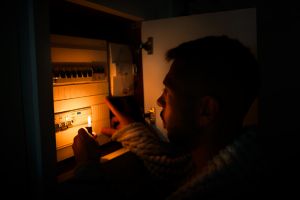 • Power outages are a common occurrence during many disasters and can last for hours, days and even weeks.
• Power outages are a common occurrence during many disasters and can last for hours, days and even weeks.
The direct effect is a lack of heat, light, the ability to cook, running water especially if you depend on a well pump, and communication. There’s also a loss of refrigeration and freezing for foods.
Fortunately, you can learn here how to build your own power plant for cheap and outlive any long-term blackout.
• Sanitary challenges from toilets that won’t flush to floodwaters contaminated by overflowing sewers and anything else a flood touches. An emergency management agency might hand you a few bottles of water but you’re on your own if you want water filtration tablets, any type of sanitizers or cleaning supplies, and at best a hotel size bar of soap.
• Medical treatment will be determined by a triage system with the most serious injuries getting priority. As serious as a deep cut or broken bone may be, if others are more severely injured they’ll get treated first.
• Shelter may eventually be offered but it will be crowded and very unsanitary. The use of the Superdome during Hurricane Katrina emerges again as a shelter idea gone horribly wrong.
• Food offered will usually be defined as a meal served in improvised soup kitchens after a long wait in line. If there is food to be distributed it will most likely be in limited quantities and rationed as one MRE per person for one meal for the day.
Related: 4 Long-Lasting MREs You Should Make for Your Stockpile
If you consider the critical needs of a large community during a disaster it’s fair to assume that any combination of emergency agencies will not only be unable to keep up with the demand, but will simply not offer some levels of aid and assistance.
If you need gas for a generator forget about getting it from any gas trucks brought into the area. That fuel will be reserved for local emergency management vehicles. That actually makes sense but if you want extra gas to keep your generator going, you’re once again on your own.
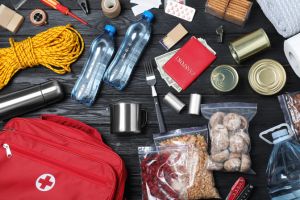 Here are some of the items you can’t assume will be provided to you during a disaster. Even when they can offer some of these items, it will again be in small quantities to ensure everyone gets a little of what they have on hand. Many preppers have these items covered but stop and think if you’re missing anything.
Here are some of the items you can’t assume will be provided to you during a disaster. Even when they can offer some of these items, it will again be in small quantities to ensure everyone gets a little of what they have on hand. Many preppers have these items covered but stop and think if you’re missing anything.
We can go for a week or more without food. We won’t last past 3 days without water. When the water all around you is polluted and unsafe it’s time to think ahead.
A complete first aid kit and a decent collection of OTC meds make sense at a time when triage rules medical treatment.
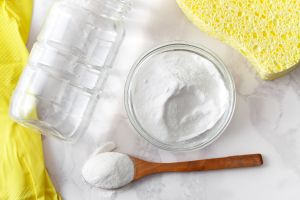
Sanitation after a disaster is both critical and difficult without the basics.
Most preppers have a pretty good stockpile of food but when cooking is a challenge you’ll want to keep things simple.
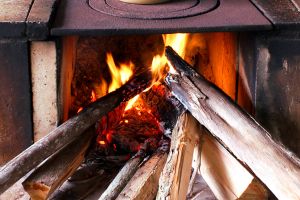 Disasters happen in every season and if the power it out, heating and cooling becomes a challenge.
Disasters happen in every season and if the power it out, heating and cooling becomes a challenge.
At night or in a dark room or basement you’ll need some type of alternative lighting.
Shelter is critical whether it’s in the backyard or during a bugout.
Probably. A lot depends on your family situation and your location. What’s critical to understand is what you may have to do without, and how you can satisfy that need from your stockpile of supplies and equipment. How much you stockpile is up to you.
You may also like:
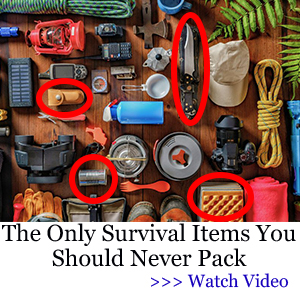 I Wish I Knew This Before I Started Prepping
I Wish I Knew This Before I Started Prepping
How to Build an Underground Bunker for Cheap (Video)
8 Ingenious DIY Chicken Projects
What the Amish Ate During the Great Depression
9 Hiding Spots in Your House Where Looters Always Look First
